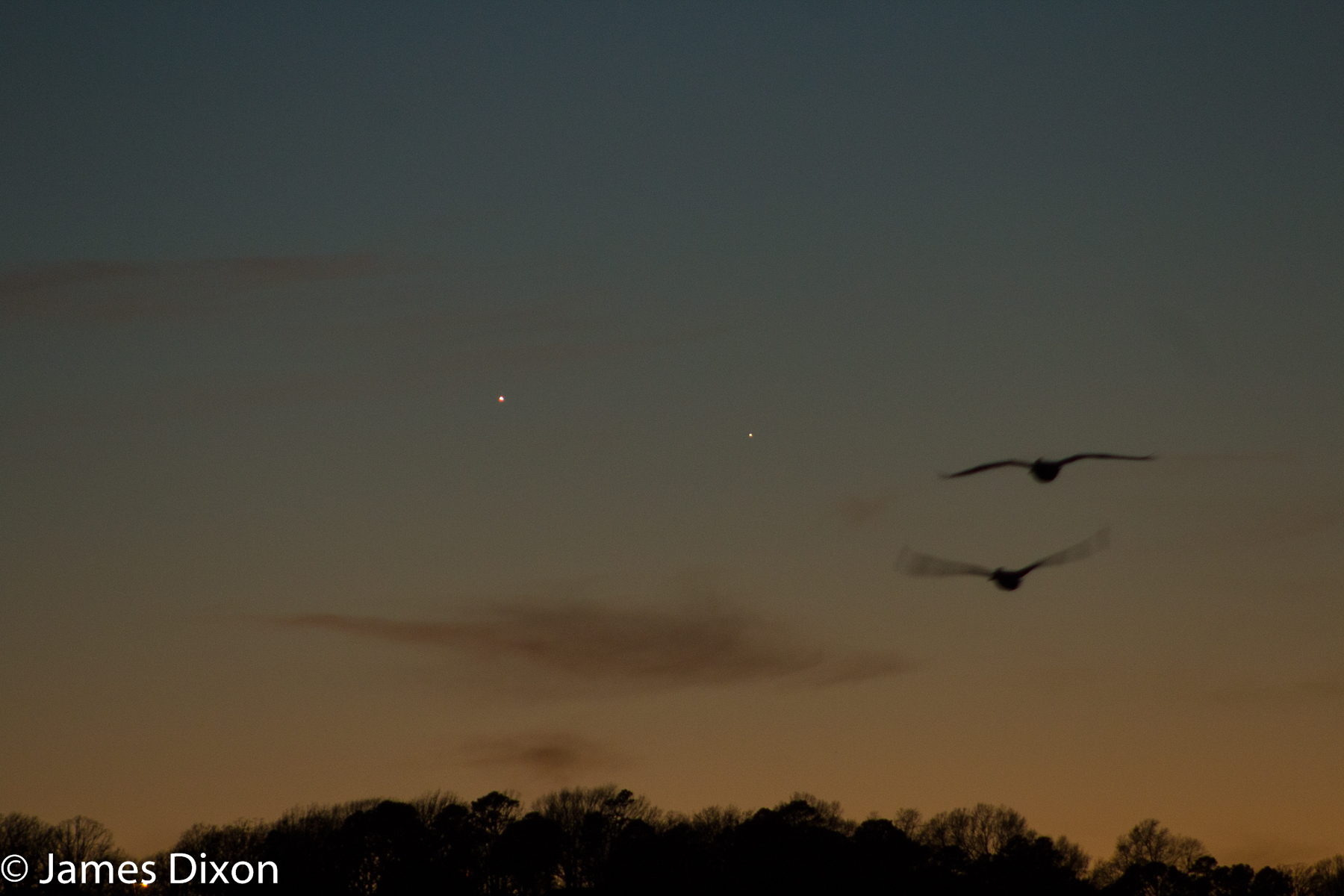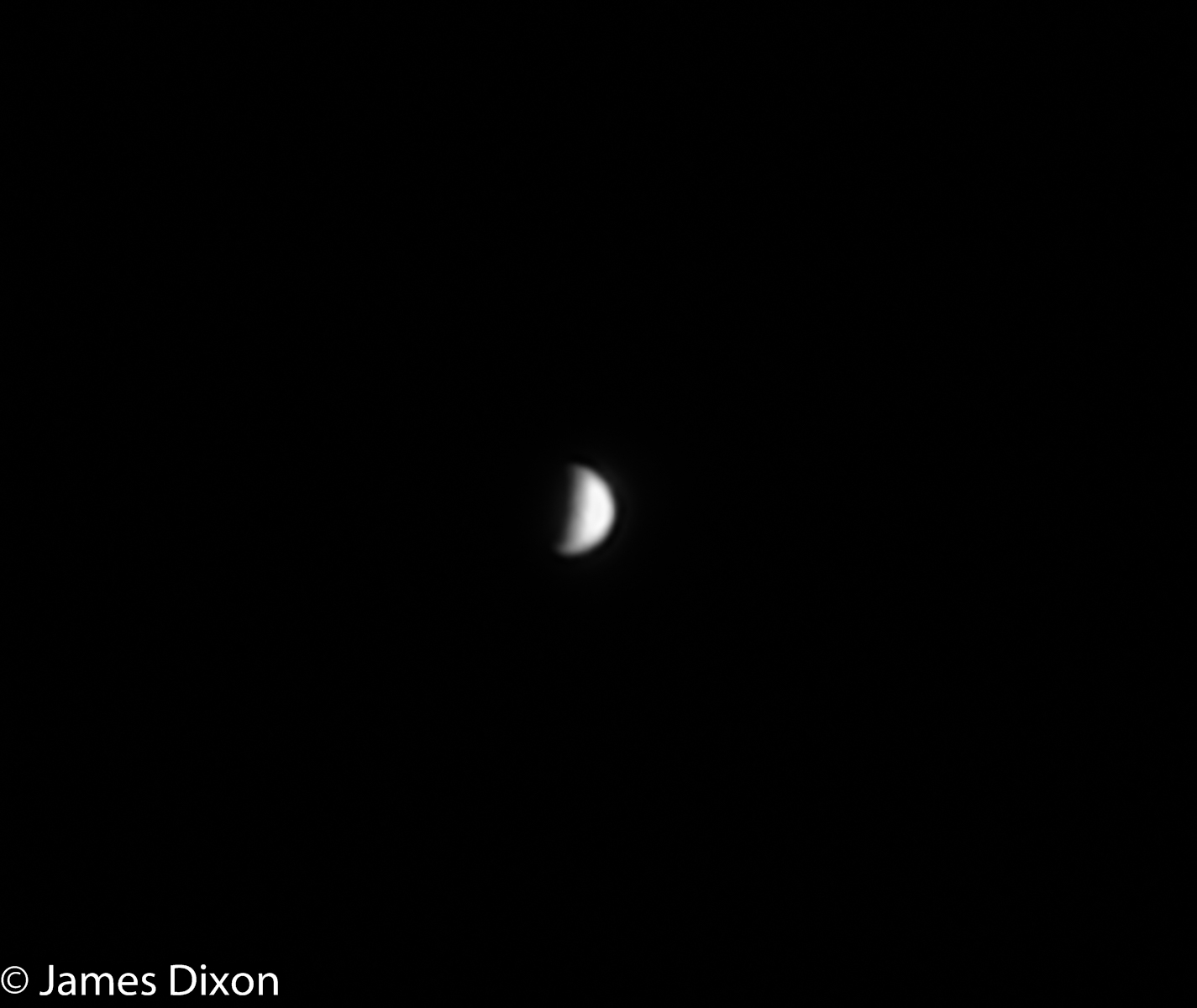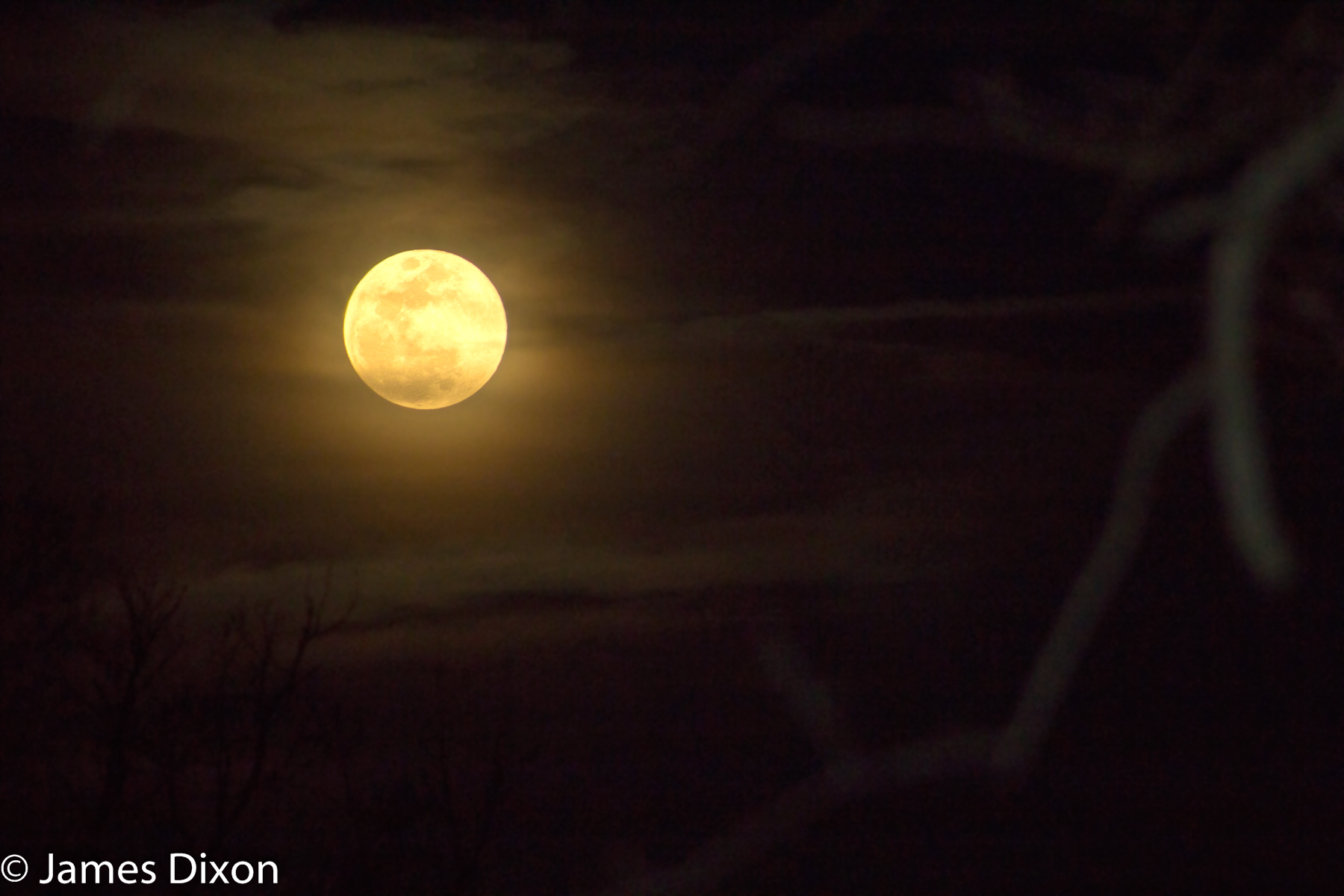Here is an image of Mercury taken from the River Ridge Observatory this evening. Mercury is currently popping up in the western sky for a few days as it does about four times per year before it slides right back down toward the Sun. Right now it is above and to the right of Venus but dimmer. Over the next several days it will get larger and more crescent shaped but will also get closer to the Sun making it more difficult. This was taken with my trusty 9.25″ SCT with my ASI120MM camera. A red filter was used to reduced atmosphere induced chromatic aberration. I combined the best 25% of 5000 1 millisecond images then sharpened in Photoshop.
Venus and Mercury Little Rock March 3, 2018
Today, I’ve seen and photographed all five bright planets. This morning I got up early and went to the River Ridge Observatory to image Jupiter, Mars, and Saturn. As it turned out, those attempts were too noisy to show but then about 13 hours later I was able to capture a near conjunction of Venus and Mercury after sunset. The two planets are just over one degree apart. Enjoy the short video.



